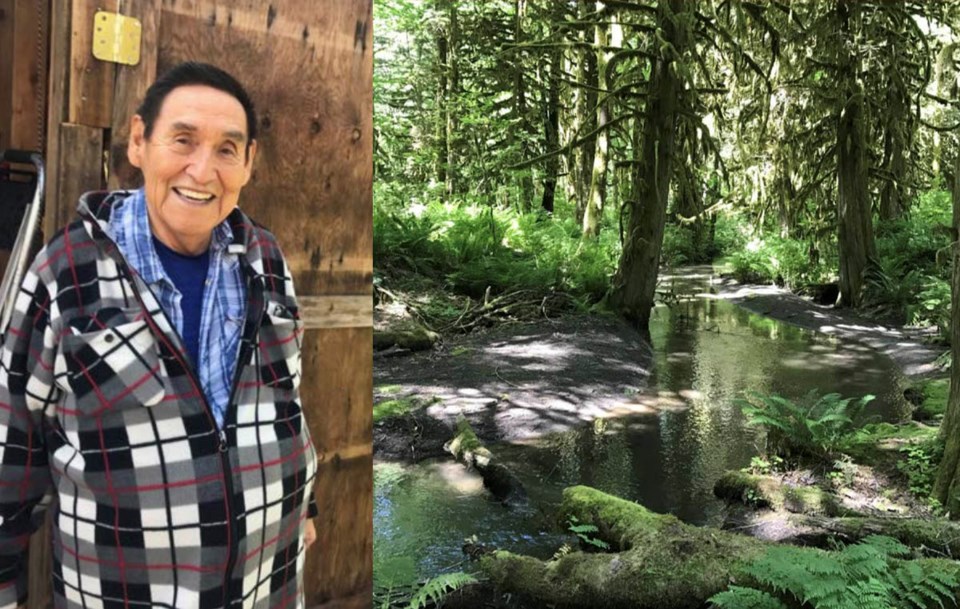A hereditary trapline on Brohm Ridge is featured in a report released this week by West Coast Environmental Law.
Squamish’s Siumshun (Richard Billy) is a contributor to the document, which is meant to be a resource document for Indigenous trappers trying to establish legal protection for their traditional hunting areas.
“This report is meant to acknowledge the serious challenges these trappers face while presenting recommendations to help improve the situation for trappers, their families, and the lands and waters they rely on,” said the organization’s executive director Jessica Clogg.
Siumshun is one of three trappers included in the report, along with Dunne-Zah/Cree trapline holder Bud Napoleon and Saulteau trapline holder Derald Gauthier.
Siumshun’s father, Siumshun Moses Billy, established the trapline on Brohm Ridge during the early 1900s, according to the report. In the document, Siumshun explains the challenges the family has faced in maintaining the trapline as the area has developed.
In the 40s and 50s, the area was heavily logged, and since then the family has been waiting for reforesting in order to begin harvesting animals again, he said.
Even in the late 90s, Siumshun notes in a letter to the BC Treaty Commission that there was bike trail close to the trapline and frequent hikers and recreationalists disturbed the animals.
Still, Siumshun said it’s important to his family to “keep the area green.”
In the late 90s, Siumshun wrote to the Environmental Assessment Office to oppose the nearby original Garibaldi at Squamish ski resort proposal.
“I’m trying to preserve our trapline for our grandchildren and great-grandchildren and future generations, so I am still here talking about it,” he says in the report.
While development and logging has made trapping difficult, the family still uses the area to hunt, collect berries and harvest medicinal plants.
“Our family walked this beautiful land before all this pollution and what’s happened with this so-called progress,” said Siumshun, in the report. “We walked and we enjoyed this land. We lived off the land, we lived with animals, we protected each other. We didn’t overtake, we just took what we needed for the family and that’s it. That’s what I have to say for now, and while I’m still alive, I’m gonna protect it.”
Siumshun said he plans to survey the area to prevent trespassing and protect the trapline for his children and relatives.
The report makes several recommendations to help protect Indigenous legal rights, including involving trapline owners like Siumshun in the consultation process for major projects and nearby decisions around the use of herbicide or brush burning.
The document also includes suggestions for more “big picture” initiatives, such as increased funding for the documentation of family stories and cultural significance around traplines and increased education from an Indigenous perspective.
The final recommendation is the creation of an Indigenous trapper-led organization for trapline users in B.C.



